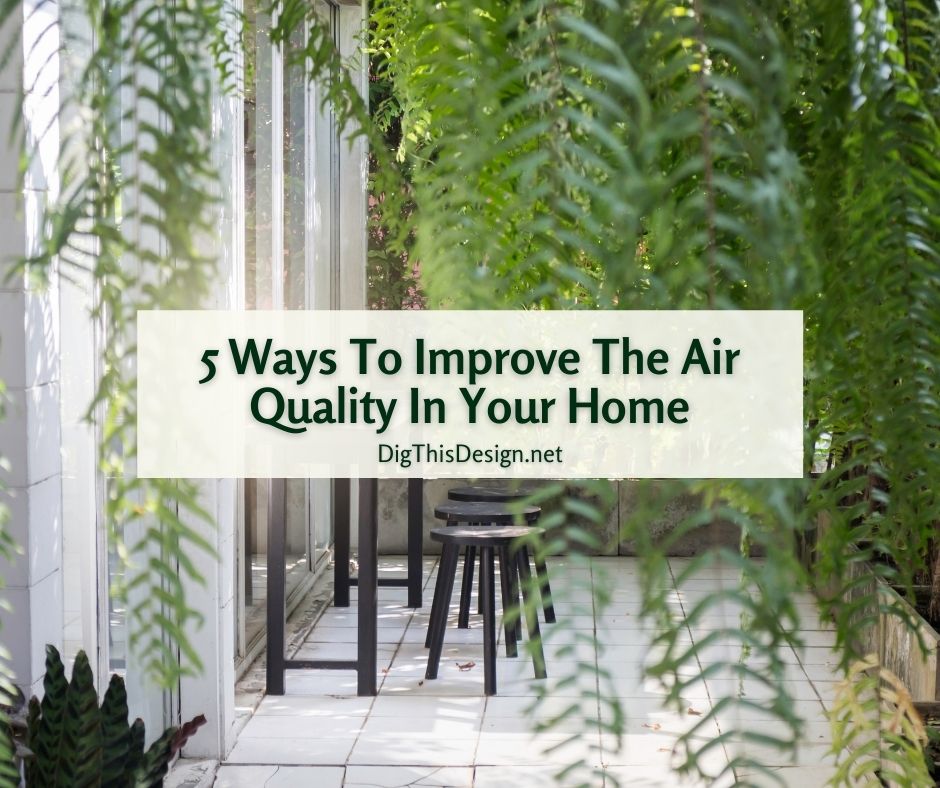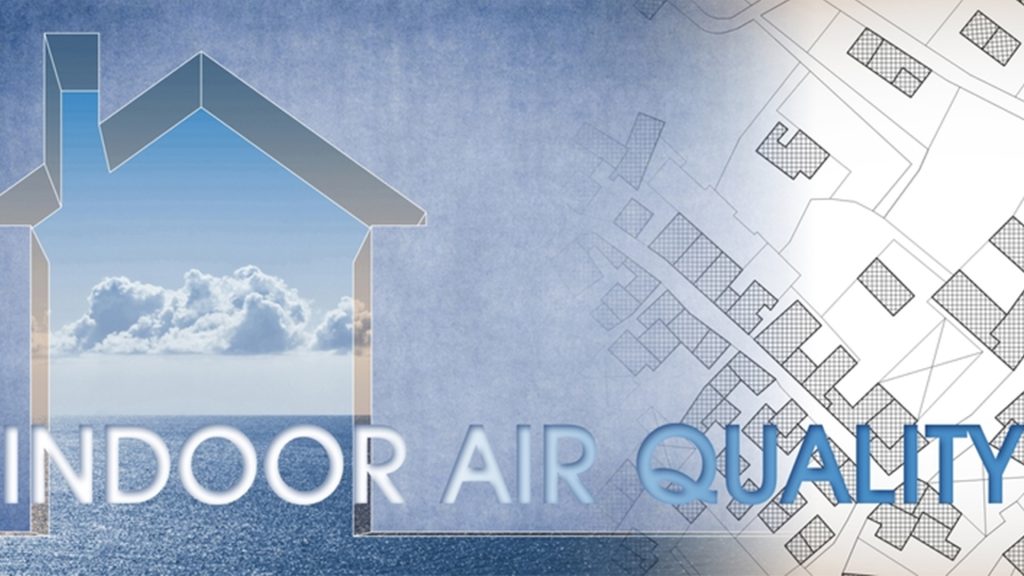

Home tips for improving air quality and your health are essential for a comfortable and healthy living environment. Imagine waking up each morning feeling refreshed and energized, knowing the air you breathe is clean and pure—this is the promise of good indoor air quality. Air quality directly impacts our respiratory health, potentially triggering allergies and other health issues, especially among those who suffer from sensitivities. This article explores various home-based strategies to significantly improve indoor air quality, thereby enhancing your overall well-being. We’ll delve into effective ventilation techniques, cleaning methods for reducing allergens, and the use of air purifiers to create a healthier home environment.
Understanding the Importance of Clean Air
Recognizing the Impact on Health
Poor air quality inside our homes can have a profound impact on our health. Studies have shown a strong correlation between poor indoor air quality and respiratory problems, allergies, and other health issues. Breathing contaminated air can trigger asthma attacks, worsen existing allergies, and even contribute to long-term health problems. These health concerns highlight the importance of creating a clean and healthy indoor environment. Many people spend most of their time indoors, so maintaining a clean air quality environment is paramount. The quality of our indoor air is often overlooked as a factor in health, but it significantly affects our daily routines and well-being.
Identifying Common Indoor Pollutants
Several factors contribute to poor indoor air quality. Volatile organic compounds (VOCs) released from household products, including cleaning supplies and paints, can contaminate the air. Allergens like dust mites and pet dander can accumulate indoors, triggering allergic reactions. Mold spores thrive in damp environments, adding another dimension to the problem. Radon, a naturally occurring radioactive gas that seeps from the soil, can also present a serious health risk if not addressed. These various sources collectively impact the overall air quality inside our homes. Recognizing these elements can significantly aid in formulating targeted strategies for improvement.
Optimizing Ventilation for Fresh Air
Implementing Strategic Airflow
Adequate ventilation is a cornerstone of improving indoor air quality. Opening windows regularly to allow fresh air to circulate and exchange indoor pollutants with the fresh air outside is an important first step. This natural ventilation method helps to dilute indoor contaminants and introduce much-needed fresh air. Consider installing exhaust fans in kitchens and bathrooms to remove moisture and odors from these areas, as moist environments are breeding grounds for mold. Strategically positioning fans can greatly enhance air circulation and prevent buildup of pollutants and humidity.
Understanding Airflow Patterns
Understanding how air flows within your home is critical for efficient ventilation. Think about how air currents move from room to room and how this can affect the spread of pollutants. Airflow patterns are sometimes influenced by architectural features such as the placement of doors, windows, and furniture. By understanding and adjusting these factors, we can better manage the flow of fresh air within our homes. This approach helps create a cleaner and healthier environment for all who inhabit the space.
Cleaning Strategies for a Healthy Home
Managing Allergens and Pollutants
Maintaining a clean home through regular and meticulous cleaning is vital for reducing allergens and pollutants. Removing dust and debris from surfaces, regularly vacuuming and dusting, and addressing moisture issues promptly can prevent buildup of indoor pollutants. This proactive approach to cleaning can go a long way in minimizing the risk of potential health issues. Addressing dust mite infestations, which commonly occur in carpets and bedding, is also vital for allergy sufferers.
Utilizing Effective Cleaning Methods
Cleaning methods should be aligned with the types of pollutants present. For example, using products containing high levels of volatile organic compounds (VOCs) may contribute to poor air quality, so choosing low-VOC cleaning supplies is essential. Also consider using microfiber cloths for dusting, as they are highly effective at trapping dust and allergens. These practices promote a healthier living environment. Don’t forget areas like baseboards, windowsills, and other frequently missed spots. In addition to regular dusting and vacuuming, focus on preventing the build-up of dust.
The Role of Air Purifiers in Enhancing Air Quality
Choosing the Right Air Purifier
Investing in a high-quality air purifier can significantly improve indoor air quality. Air purifiers use various filtration methods to remove pollutants from the air. Consider factors like the size of your living space, the types of pollutants prevalent in your area, and the noise level when selecting an air purifier. These are key considerations in ensuring that the chosen device effectively addresses your specific needs and provides significant benefits.
Optimizing Air Purifier Placement and Use
Proper placement of air purifiers is crucial for their effectiveness. Place purifiers strategically to ensure optimal air circulation throughout the home. Regular maintenance and cleaning of the air purifier are also important. This maintenance ensures efficient removal of pollutants and helps prevent the growth of mold and mildew inside the purifier, preserving its performance. By understanding the ideal placement and proper care, you can maximize the benefits of your air purifier and ensure optimal air quality in your home. Consider the location of the purifier in relation to high-traffic areas or known sources of pollutants for enhanced efficacy.
Maintaining Indoor Humidity for Optimal Health
Controlling Humidity Levels
Maintaining a suitable humidity level indoors is essential for preventing the growth of mold and mildew, and the spread of pathogens. High humidity can create ideal conditions for mold and mildew to thrive, thus impacting air quality. Using dehumidifiers in areas prone to moisture buildup can help regulate humidity, thus promoting a healthier and more hygienic environment. Maintaining humidity levels within the ideal range is crucial, as this directly affects the comfort and health of those in the space.
Implementing Dehumidification Strategies
In addition to dehumidifiers, you can use other strategies to control humidity. Ensure that water is properly draining away from walls and foundations. This action can greatly minimize the opportunities for mold to develop. Open windows frequently, especially during periods of high humidity, to promote air circulation and keep moisture levels down. By understanding and addressing issues with moisture and humidity, you can effectively maintain a clean and healthy indoor environment.
Addressing Potential Allergens and Irritants
Minimizing Allergens in the Home
Identifying and minimizing allergens is essential for a healthy indoor environment. Pet dander, dust mites, and pollen are frequent triggers for allergic reactions. Taking proactive steps to limit allergen accumulation in the home can significantly improve air quality and overall health. By utilizing allergen-reducing methods, you can dramatically improve the quality of life, especially for individuals prone to allergic reactions.
Using Allergy-Reducing Cleaning Supplies
Selecting cleaning products with reduced volatile organic compounds (VOCs) or non-toxic alternatives can make a significant difference. Consider using allergy-friendly materials, such as hypoallergenic fabrics and furniture, and keeping frequently touched surfaces clean.
Incorporating Healthy Plants to Improve Air Quality
Understanding the Air-Purifying Properties of Plants
Many indoor plants have the remarkable ability to absorb pollutants from the air and release oxygen. These air-purifying plants create a healthier indoor environment through their natural processes. Researching specific plants and their air-purifying abilities can help you choose the right ones for your space.
Choosing the Right Plants for Your Home
By selecting the appropriate plants, you can significantly enhance the overall air quality of your home. Factors like light requirements, watering needs, and specific pollutant absorption abilities should be taken into consideration. Remember to thoroughly research plant care and compatibility with your home’s environment.
Frequently Asked Questions
What are some common air pollutants in homes?
Common indoor air pollutants include volatile organic compounds (VOCs) from household cleaning products and paints, allergens such as dust mites and pet dander, mold spores, and even radon from the soil. Proper ventilation, regular cleaning, and selecting low-VOC products can help mitigate these issues. Consider testing your home for radon, especially if you live in an area known to have elevated levels. Remember, even seemingly innocuous items can contribute, like certain building materials.
How can I measure my home’s air quality?
Air quality monitoring devices, both home and professional-grade, can provide insights into the quality of air in your home. These devices measure various pollutants, like particulate matter, VOCs, and gases. Home monitoring tools are often relatively affordable and offer a continuous sense of your air quality, allowing for proactive adjustments in your home environment.
What is the best way to choose an air purifier for my home?
The best air purifier for your home depends on the specific pollutants and the size of the room. Factors to consider include the type of filtration, CADR (Clean Air Delivery Rate) for the size of the space, noise levels, and energy efficiency. Different brands and models cater to various needs, so researching and comparing options based on these criteria is essential. Consider your budget and lifestyle preferences when making your choice.
In conclusion, improving home air quality is crucial for your overall health and well-being. Implementing the tips outlined in this article, from choosing the right air purifier to optimizing ventilation and maintaining indoor hygiene, can make a significant difference. By taking proactive steps to enhance air quality in your home, you’re investing in a healthier environment and a happier life. Now, take action and start improving your home’s air quality today! Visit our website or social media for more insightful articles and tips.